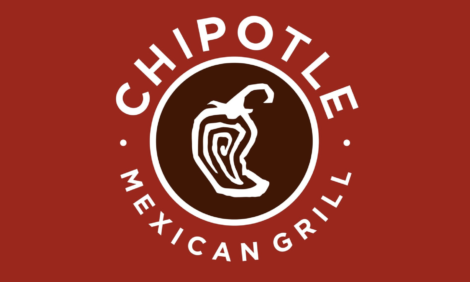



Meat and Poultry Price Update 2004
RUSSIA - Government actions to decrease import market access and high grain prices have forced prices for meat higher in the Russian Federation over the past year. The single biggest factor was the intoduction of a quota on poultry meat and tariff rate quotas (TRQ) on beef and pork.Report Highlights
Additionally, poor implementation of these measures has caused price swings due to traders’ uncertainty about their ability to cope effectively with unanticipated events. Expectations of another average feed grain crop coupled with low world grain stocks will likely bring no relief from high feed costs.
Summary
Government actions to decrease market access for imports and high feed prices have forced prices for meat higher in the Russian Federation over the past year. The single biggest factor was the intoduction of a 1.05 million metric ton quota on poultry meat and tariff rate quotas (TRQ) on beef and pork in 2003 (420,000 MT and 450,000 MT). Moreover, poor implementation of these measures has caused price swings due to traders’ uncertainty about their ability to effectively cope with anticipated measures. Expectations of another average crop year will likely bring no relief as domestic producers cope with high feed costs, which will not permit domestic producers to relieve the price/supply crunch. Prices are set to rise farther when the market senses no relief for domestic producers or for key suppliers in Ukraine, while imports remain limited. Recent moves to halt all imports from the EU are likely to bring short-term price increases and greater uncertainty to the market.
Market Intervention
The Russian Government has actively been involving itself in the meat market over the past year. Various actions it has taken have combined reduced feed grain availability to drive overall meat prices higher. Below is a brief outline of the events that have been shaping the Russian market since 2003.
May/June 2003 – Introduction of quota on poultry meat and TRQs on beef and pork
Late Fall/Winter 2003 – Mediocre grain harvest and poor fodder crop plus significant Russian grain exports
Winter 2003/04 – Avian Influenza in Asia raises global poultry prices
December 2003 – Rush to fill 2003 quota and TRQ in anticipation of subsequent problems issuing initial 2004 import licenses
January/March 2004 – “Technical“ problems allocating quota and TRQs leads to almost three months with significantly reduced meat and poultry imports
June 2-8, 2004 – Russia temporarily halts all EU imports due to unsuccessful negotiations over a unified veterinary certificate
Spring/Summer 2004 – Expectations of average crop production and little price relief for domestic feed grains
Clearly, not all of these developments were the result of Russian Government actions.
However, the Russian Government’s decisions have had significant consequences for Russian
producers and consumers (For a complete description of past meat and poultry market
issues, please see the following Attache Reports: RS3018, RS3019, RS3026, RS3028,
RS4005, RS4009, RS4013, RS4016). The two key events leading to higher prices have been
the import limitations and poor harvest.
Russian producers have long lobbied for protection from imports, which was finally
forthcoming beginning May and June 2003. This is the most significant cause of higher
prices in Russia. After an initial period of implementation, from May 30 to September 30,
Russian prices rose significantly for imported meat (poultry between 15 and 34 percent, beef
nine percent, and pork 27 percent). At the same time, Russian domestic producers mirrored
or exceeded these price increases in order to take advantage of the protection offered by the
government. The quota and TRQs essentially raised the approximate average price in the
entire meat market by about 25 percent and it will probably remain at least that much higher
as long as these limitations are in effect.
The next factor to affect meat prices was the mediocre grain and fodder harvest of 2003,
which was exacerbated by the continued export of Russian grain. The beef and pork markets
have been the most affected by feed and fodder prices, as the large poultry producers were
already sufficiently profitable to absorb higher grain prices or begin importing fodder.
Initially, this led to increased cull levels, which meant an increase in supply in the winter of
2003/04 and stable prices.
However, this could not last and as culling has slowed, the price
for domestic beef and pork has risen continuously. Imported beef and pork prices remained
steady as the larger volumes of domestic product went through the system, but began to
rise in the spring of 2004 as domestic product became less available and more expensive.
Imported beef prices are also expected to rise due to supply constraints in Russia’s biggest
supplier, Ukraine. The situation in Ukraine is very important because it is not included in the
TRQ and, as the largest exporter of beef to Russia, acts as a supplier of last resort when
domestic or other imports are unavailable.
The poultry market is different from the pork and beef market due to the higher percentage
of imported product and the high profitability of a significant portion of the industry. Thus,
the same price jump occurred after the imposition of the poultry quota, but feed prices were
less important during the autumn. One important factor was the significant import jump in
December as all importers tried to use up their import licenses. These stocks and a strong
ruble versus the dollar helped the market ride out the Asian avian influenza scare and
problems in implementing the quota early in 2004. In contrast to the beef and pork
sectors, despite significantly higher feed prices, poultry production has continued to climb.
Increased production has played an important role in maintaining relatively stable prices
since the imposition of the quota gave a boost in mid-2003.
Source: USDA Foreign Agricultural Service - 15th June 2004






